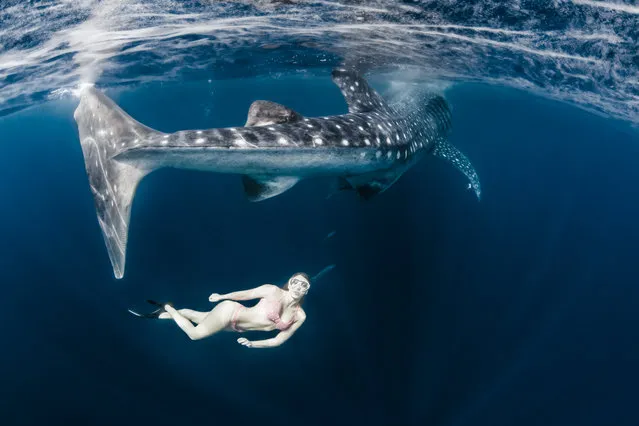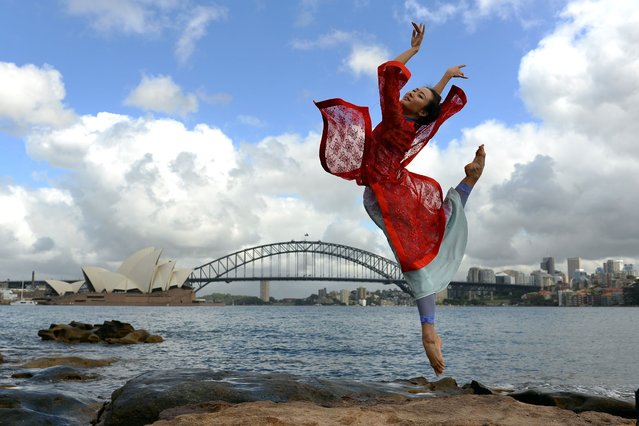
Model, skydiver and wing-suit jumper Roberta Mancino, 33, swims with a whale shark on February 2014 in Isla Mujeres, Mexico. A female skydiver swims with whale sharks, manta rays and sailfish – the fastest fish in the sea. Model, skydiver and wing-suit jumper Roberta Mancino, 33, jumped from a boat into the ocean surrounding Isla Mujeres near the northern Peninsula of Mexico. The incredible project involved two trips to the stormy winter seas – one in February 2013 and one a year later in February 2014. (Photo by Shawn Heinrichs/Barcroft Media)
17 Aug 2014 08:36:00,post received
0 comments







